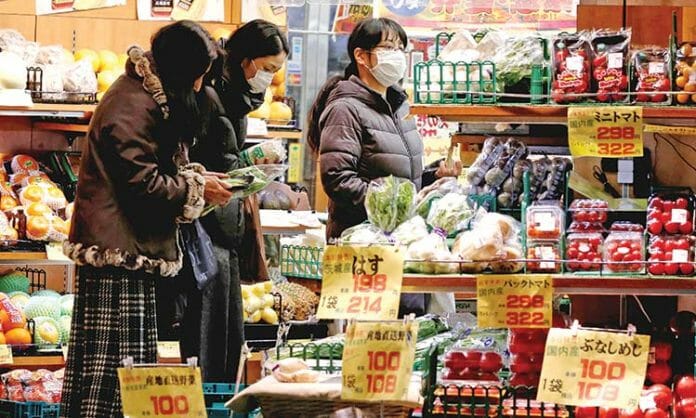Japanese factories cut output slightly in December, capping the worst quarter for manufacturers since the onset of the COVID-19 pandemic, hit by stalling global demand and rising costs.
Although retail sales, a barometer of service-sector activity and consumer spending, rose more than expected, the faltering factory activity is ill-timed as companies face calls to hike wages to sustain Japan’s post-pandemic recovery.
“Japan is nearing a recession if you look only at manufacturers, but solid non-manufacturers are underpinning the overall economy,” said Takumi Tsunoda, senior economist at Shinkin Central Bank Research Institute.
Industrial output fell 0.1 per cent in December from the previous month, government data showed on Tuesday. The drop was less than the median market forecast for a 1.2 per cent decrease and followed upwardly-revised 0.2 per cent growth in November.
Outputs of items related to capital expenditure such as general machinery and metal products, which dropped 6.0 per cent and 3.0 per cent, respectively, dragged down the overall December index. Output of auto products was up 0.6 per cent, posting first growth in two months.
Compared with the previous quarter, factory output fell 3.1 per cent in October-December, the first drop in two quarters. The fall was biggest since April-June 2020’s 16.8 per cent decline, when the impact of the pandemic first fully hit the world’s third-largest economy.
Manufacturers surveyed by the Ministry of Economy, Trade and Industry (METI) expect output to remain flat in January and increase 4.1 per cent in February, the data also showed, although the official poll tends to report an optimistic outlook.
Separate data showed on Tuesday Japanese retail sales rose 3.8 per cent in December from a year earlier, beating a median market forecast for a 3.0 per cent gain and its tenth straight month of expansion.
Japan is set to downgrade its disease classification of COVID-19 to a lower level equivalent to the seasonal flu in May, Prime Minister Fumio Kishida said on Friday, raising hopes for further economic normalisation coupled with a tourism reopening.
The jobless rate stayed unchanged at 2.5 per cent in December, another official data showed. Jobs-to-applicants ratio, a gauge of job availability, was also flat from the previous month that posted the highest reading since March 2020.
With a tightening labour market, 41-year-high consumer inflation and policymakers’ pleas, more than half of big Japanese companies are planning to raise wages this year, a Reuters survey showed this month.
Yet the small companies that provide most of Japan’s jobs are struggling to increase pay, testing the Bank of Japan’s rosy picture of sustainable economic growth in tandem with wage hikes.
“Rising raw material costs are increasingly tormenting small companies, who are willing to raise workers’ wages but must be realistic about their bottom line amid a cost squeeze,” said Shinkin’s Tsunoda.
“Pay hikes won’t prevail outside of big firms, so the monetary policy should stay easy.”
Japan’s economy, after a surprise contraction in July-September, is expected to have expanded by an 3.0 per cent annualised growth in October-December thanks to solid consumption, according to the latest Reuters poll.
Jobless rate flat at 2.5% in Dec
Japan’s jobless rate stayed unchanged at 2.5 per cent in December, while the availability of jobs was also flat from the previous month, government data showed on Tuesday.
The seasonally adjusted unemployment rate also matched economists’ median forecast in a Reuters poll.
The jobs-to-applicants ratio stood at 1.35, labour ministry data showed.









